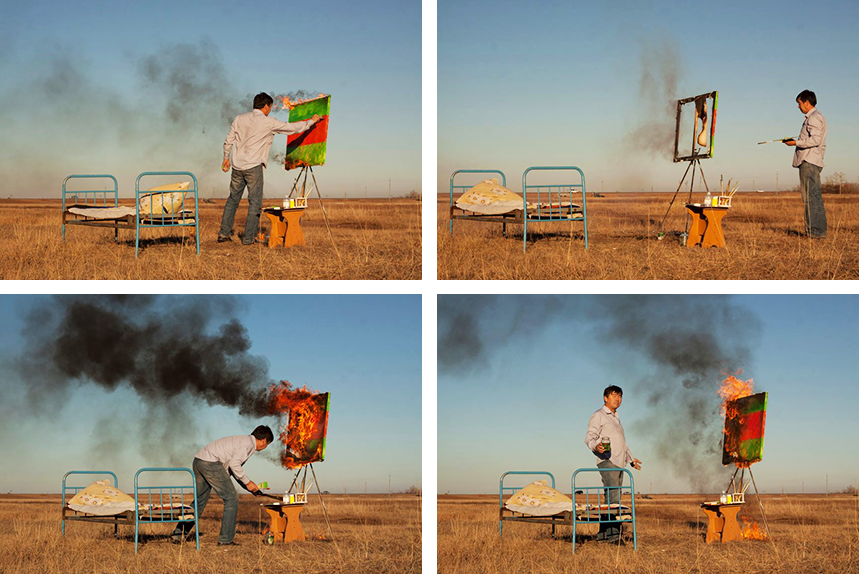Askhat Akhmedyarov
Born in 1965 (Uralsk, West Kazakhstan)Lives and works near Astana (Kazakhstan)
The work of Askhat Akhmediarov is curious, inventive, in a way undisciplined. Hardly assignable to a particular category, his paintings combine pictorial tradition and contemporary designs, precise and disordered lines, realistic figures and abstract shapes. A creative freedom also appears in the choice of his subjects, sometimes in surrealistic scenes, such as a painting of Adam and Eve with a laptop, or post-socialist portraits of Kazakh sweepers. His works can be analyzed at different levels of reading, playing of ambiguities and installing a critical distance, not without irony. The mixtures of cultures are certainly sources of emancipation and artistic effervescence but they also embody the risk of dissolving Kazakh identities.Through his works, Askhat Akhmediyarov makes the viewer sensitive to the dissonances of a world in full transition.
In the photographic series Nomad, Askhat Akhmediyarov plays the contradictory character of a sedentary itinerant or a nomadic non-traveller. The clash of civilizations creates this paradoxical situation to see mobile populations adopt consumer attitudes. In the middle of the steppes, this new nomad installs his soviet furniture in a fictional urban architecture, within a wild landscape, unsuited to his lifestyle. This absurd image questions with humor gaps that might exist between respect for traditions and the adoption of new sedentary behaviors clearly influenced by the West. Facing these models of comfort that television gives him access, the nomad is desperate, isolated, seeking in vain walls that promised him security. Funny and sadall at the same time, he embodies the perspective of an aborted dream. With Automn Cleaning, the artist stages a need of renaissance. This personal quest for purification also echoes a sense of renewal that drives Kazakh contemporary creation. This dialectic between creation and destruction, which draws its sources in ancient myths, has indeed became an integral way of producing in contemporary art (Arman, Steven Parrino, Cai Guo Qiang...).Erase to start all over again does not simply refer to a vain cycle, but discovers new artistic possibilities, like a flat canvas suddenly taking the form of a living and complex architecture.




